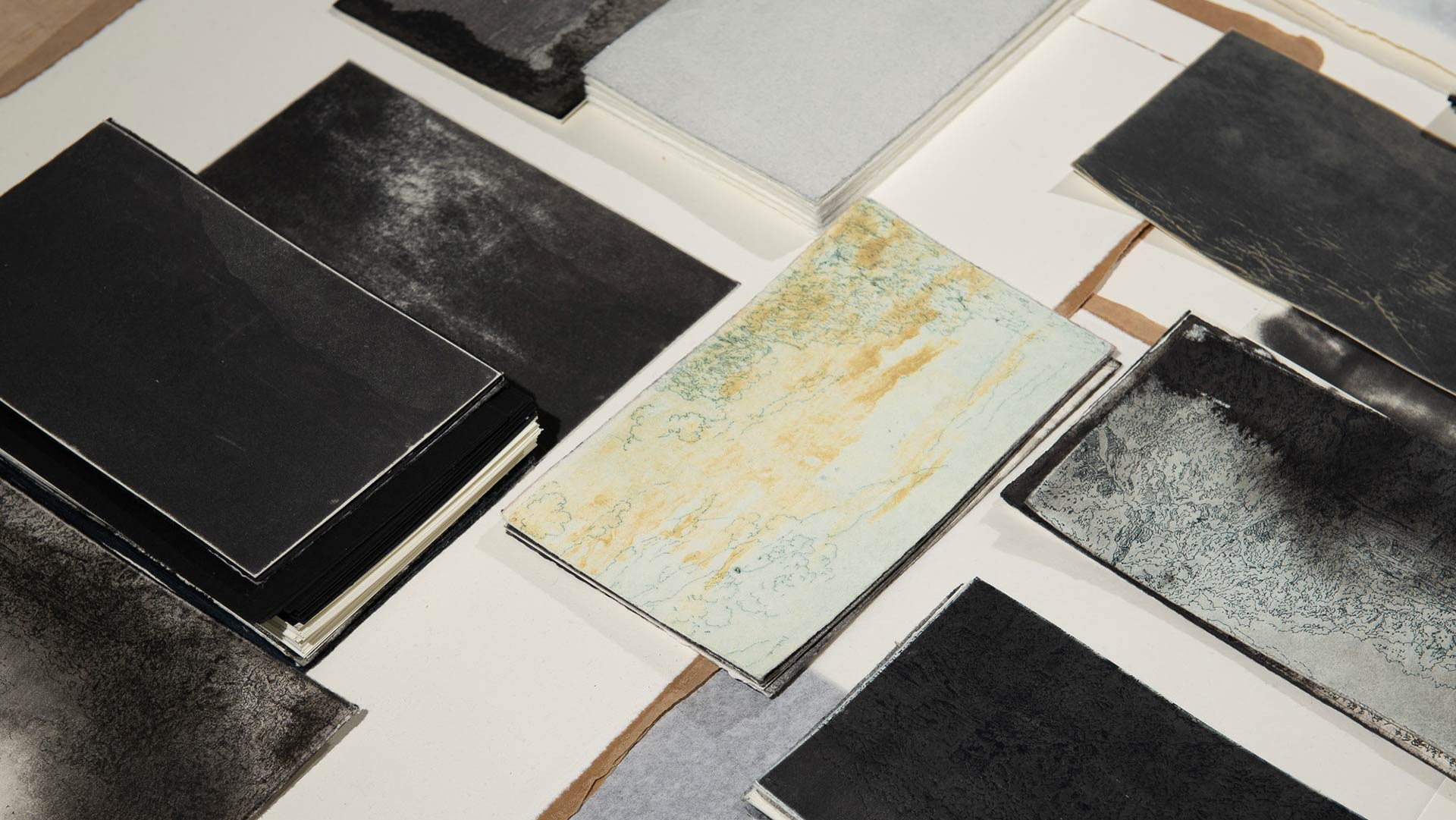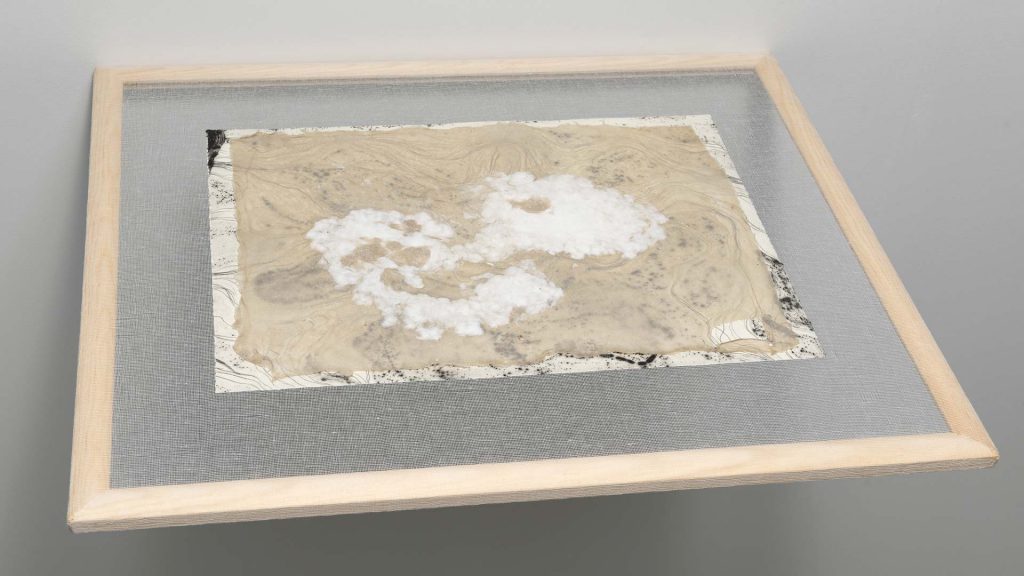Unwrapped Valleys
The University of the Arts Helsinki
The four teachers of the Printmaking subject area at the Academy of Fine Arts – Ari Pelkonen, Tatu Tuominen, Laura Vainikka and Annu Vertanen – work for the Graphica Creativa exhibition in a collaborative print project that explores authorship Unwrapped Valleys – Kuvitellut maisemat.
Ari Pelkonen, Tatu Tuominen, Laura Vainikka and Annu Vertanen are four artists who work as teachers in the Printmaking subject area of The Academy of Fine Arts. Their collaborative work Unwrapped Valleys – Kuvitellut maisemat for Graphica Creativa exhibition explores the notion of authorship.
As a starting point for the project is the art of Dutch Hercules Segers (1589-1633). The project looks at Segers’ small, strange prints but also at his mythical personality. Exhibitions of Segers’ works at the Rijks Museum in Amsterdam 2016 and the Metropolitan Museum in New York 2017 brought his work to the awareness of a larger audience, but some secrets remain unravelled. We know that Segers was an innovator of new printmaking technologies, for example he invented lift ground and worked on a wide range of unique, colored intaglio prints. His production includes an amazing amount of mountain landscapes even Segers never traveled to the mountains. He must have admired other artists paintings; behind his mountains there are other mountains. It has been said of his works that no one wanted to look at them during his lifetime in the 1500s to 1600s – sad – but he became re-known in the 19th century. What we know of Segers’ life is from the pen of Samuel van Hoogstraten, an art historian, poet and painter written a couple of hundred years after the master’s death. Van Hoogstraten presents Segers as a romantic genius, therefore lonely, poor and misunderstood, but Van Hoogstraten’s interpretation was based more on Segers etchings than genuine biographical data. The facts might have been already lost at that time. Thus, all the data from Segers and the reproductions of his work on which we rely are indirect – it is impossible to reach the real Segers. The more one investigates the subject, the more it seems that there is no certainty – the only thing that is certain are the remaining prints and paintings.
In this project, the group dismantles Segers’ works by sorting them out by their ingredients, working simultaneously, collaborating and individually. The question of authorship is, alongside Segers’ works, the starting point for the project. The goal is to find out what authorship and non-authorship may represent to the group, to gain experiential knowledge of manipulating and handling the personal aspirations and artistic thinking of the four different artists, while at the same time trying to let go of personal ambitions and cautiousness in dealing with others’ works, still retaining artistic interest and motivation. The situation is new for all participants. Working together in this kind of framework raises completely new questions.
Rules for the Unwrapped Valleys – Kuvitellut maisemat project:
Rule 1. There are no rules.
Rule 2. Start with 1:1 scale.
Rule 3. 1:1 scale can be ignored if necessary.
Rule 4. Your own idiom does not need to / can be deliberately faded.
The University of the Arts Helsinki
Printmaking subject area at the Academy of Fine Arts
Uniarts Helsinki’s Academy of Fine Arts offers studies fine art. The program is aimed at everyone who’s interested in fine arts. The studies in fine arts focus on personal aspirations, meetings between the teachers and the students, and personal guidance. The degree program in fine arts offers teaching in sculpture, painting, printmaking and time and space arts (moving image, photography, or site and situation specific art). The Academy is a pioneer in artistic research and has trained artists since 1848. The amount of students in fine art degree program is approximately 250.
The teaching staff of the Academy of Fine Arts is composed of distinguished artist-teachers who are actively involved in expert and reviewer responsibilities both in Finland and internationally. Tuition at the Academy of Fine Arts is based on the realization that constant change affects contemporary art and the essence of artistic work, influenced both by domestic and international factors. The teachers at the Academy work as professional artists and are actively involved in the field of art and convey their experiences to the students.
In the Degree Program in Fine Arts, the printmaking area focuses on the issues of paper-based and printed art, whereby the essence of printmaking is studied from the perspective of an expanded field as part of contemporary art. Means of expression, ways of presentation, and significance giving are considered in relation to the history of not only original print but the entire mass printing, their tradition and re-reading.
The artistic process is approached as an attitude and a way of thinking that takes into account the inherent duality of printmaking: there are the matrix and the resulting trace, imprint. Traditionally, a trace is printed on paper. Now the matrix can consist of a variety of materials, as well as the surface on which the information is mediated. Reviewing and deconstructing the process of making has become part printed art.
The printmaking teaching area conveys to the student an understanding of the contemporary field of printed art, the in-depth knowledge and skills of artistic expression, methods and material basis, and opens up a diverse range of students' thinking about printed art as a platform for information and image. Students are encouraged to seek out their own artistic solutions and presentations
Print Matters
Oslo National Academy of Fine Arts
Publish or Perish!
Tokyo University of the Arts
in a state of Flux: What now? Where are we?
The University of the Arts Helsinki
Dyscorpia
University of Alberta
The Graphica Creativa 2019 Web Exhibition is produced by Jyväskylä Art Museum | Webdesign Harjula web & dev





